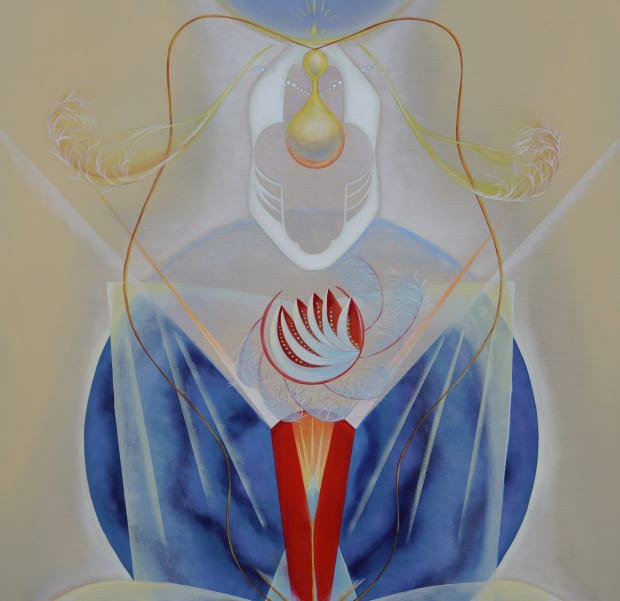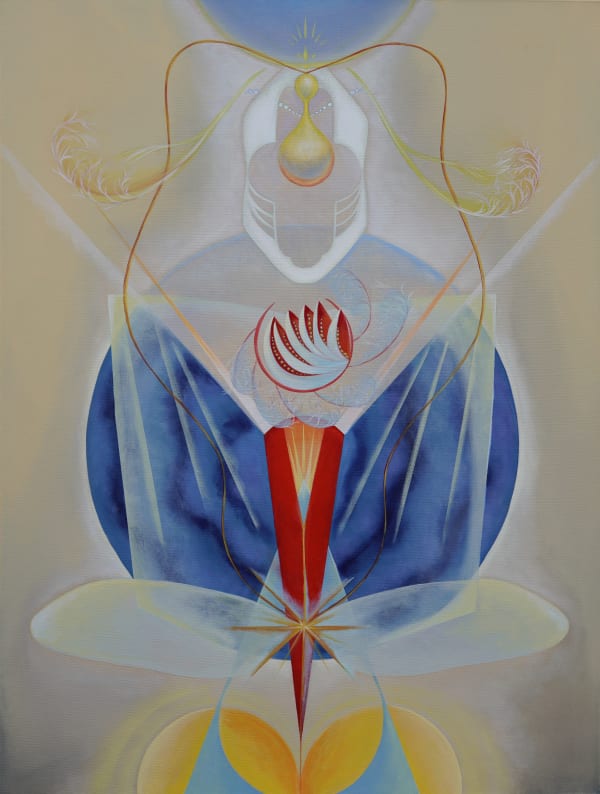-
Aigana Gali
Tengri -

-
-
Solo exhibitions: (upcoming) Tengri, Kristin Hjellegjerde Gallery, London (2022); Meditator II from Tengri, Light Works, Hamilton Gallery, London (2021); Blue Minds, Blue Marine Foundation, London (2021); “Aral” from Steppe collection, Private Gallery, London (2021); Creation Myth, Saatchi Gallery, London (2019); LEDA, Catharsis Grace Belgravia, London (2018); Steppe exhibition, Georgian National Museum of Art (2016); Steppe, Hay Hill Gallery, London (2016); Vera Pogodina Gallery, Moscow (2016); Hay Hill Gallery London (2015); Hay Hill Gallery, London (2011); The Gallery, Westbury Hotel, London (2010); Oyu Art Gallery, Almaty (2009); A Kasteev State Museum of Art of the Republic of Kazakhstan, Almaty (2009); Zig-Zag Art Gallery, Almaty (2006); Ark Art Gallery, Almaty (2005); Alma-Ata Gallery, Almaty (2004); Untitled, AVA Gallery, Cape Town, South Africa (2004).
Group exhibitions: Summer Exhibition, Royal Academy of Arts, (2022); Blue Mind Festival, Catherine Prevost, London (2021); Light works, Elisabetta Cipriani Gallery and Stories of Art, London (2021); START ART FAIR, Saatichi Gallery, London (2021); Central Asain Art Fair (2013).
-
Highlights and Collections
Aigana Gali has exhibited internationally in the USA, Europe, Central Asia and the Middle East, and has works in prominent private and public collections around the world. Important collaborations include Ricardo Bofill Taller de Arquitectura Atelier, Celine Alexandre, and Atelier 27.
-
-

-
-
Subtly infused with mythical and cosmological references, Gali’s luminous, vibrant paintings are both familiar and otherworldly. They embody the strange duality of our modern lives: simultaneously attuned to the global but materially shaped by the local. Historically inhabited by nomads, the name "Kazakh" comes from the ancient Turkic word qaz, "to wander", and the Persian suffix -stan means "land" or "place of", so Kazakhstan can be literally translated as "land of the wanderers”. It was in looking back at Kazakhstan’s peripatetic history that Aigana found a way forwards, and began to express the essential, transient nature of the steppe through the universal language of paint. Until she was ten years old, Kazakhstan was a part of the Soviet Union, “all our religious and philosophical heritage was cancelled. We were not allowed to follow our own or any religion… so my sense of the culture in the steppe feels inherited, carried in my DNA. I just knew it was there.”
Whilst Kazakhstan was named by the Soviets, and implemented a policy of Social Realism, there was an explosion of the avant-garde, “a culture that happened in hidden, windowless places, where the artist had to hide both the self and their artistic expression.” It is between these two things that the artist had to find her voice. “I am product of a collaboration: the importation of a very strict Soviet academic school and a living folk tradition. I can travel from one technique to the next, as my hands are so well practiced, but the root of my practice lies underneath this in the Scythian tradition - in shamanic ritual.”
The Steppe series expresses Gali's spiritual connection to the topographical vastness of her native land. Conjuring the emptiness of the Eurasian Steppe, she builds layers of colour by sweeping giant brushes over canvas laid on the floor, aiming to capture the ephemeral nature of colour found in open spaces. The absence of contours can suggest form; colours and mood change constantly according to the light. Here is the pale light of dawn against the soft departure of night, there the throb of infrared, saturated with brilliant hues, the works are alive. Abstracted thus, we can appreciate a purity in her relationship to the land, and a philosophical overview: a standing back to see the true essence of things, beyond border politics.
-
In this sense, the Steppe laid the groundwork for her next series: Light Works. Having produced suites of large colour field paintings for over a decade, layering the memory of light through delicate veils of colour, Aigana felt ready to deliver “a very precise message”. Enlisting a new technique, in a process which can be likened to opening a channel and painting automatically, this series was entirely different in nature. Once the picture plane is tonally unified, “a form begins to emerge from a specific point in the canvas, like a shaft of light, from which shapes unfold in perfect, geometric order.” Using the finest of brushes, the artist kneels before each image, working like an archeologist, excavating the light. They represent evolution from the abstract colour fields in Steppe - nothingness - through to the geometric forms of Tengri - being.
Gali states, "Tengri comes out of the empty spaces, from the constant solitude experienced by people who for millennia have called the Steppe home. You cannot hide there.” Tengri, is an ancient form of spirituality found in the steppe, based on folk shamanism, generally centred around the titular sky god. The name Tengri ("the Sky") is derived from Old Turkic: Tenk ("daybreak") or Tan (“dawn”). Referencing the sky and light, its followers often worshiped in caves, outlining its cosmology on the walls. Figuratively, the works echo electromagnetic imagery of the earth’s cusp, a region that denotes the day-side of the northern hemisphere, where solar winds bend the earth's magnetic field. Also responsible for the Northern Lights, this area is crowned with a halo that resembles a head, and framed by what look like angel’s wings. The closest portal to near-Earth space, NASA images capture the threshold to being out of this world. One of the pieces from this series, Meditator II, was chosen for the Royal Academy of Art’s Summer Exhibition.
“The meaning of life for followers of the Tengri is to be at one with nature, and in this we are sustained by both the spirits of heaven and earth: the eternal blue sky and the warm yellow mother beneath our feet.” Aigana Gali.
-
-
Enquire
-
Aigana Gali : Tengri
Past viewing_room












